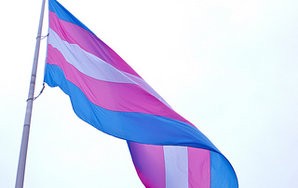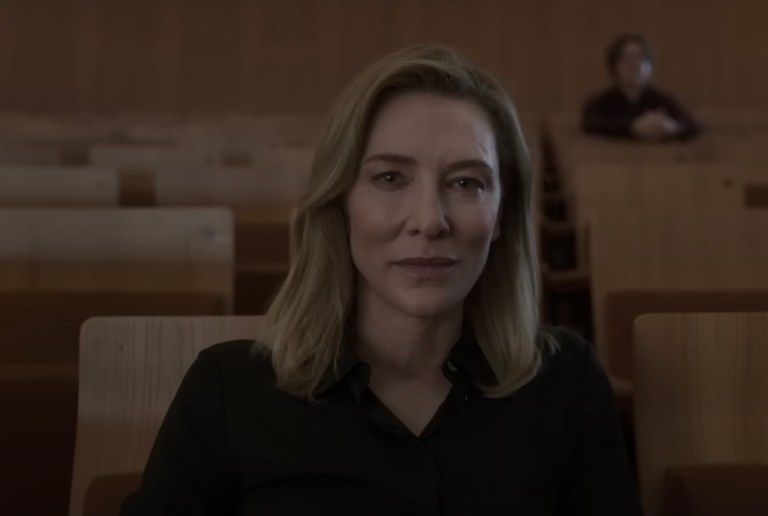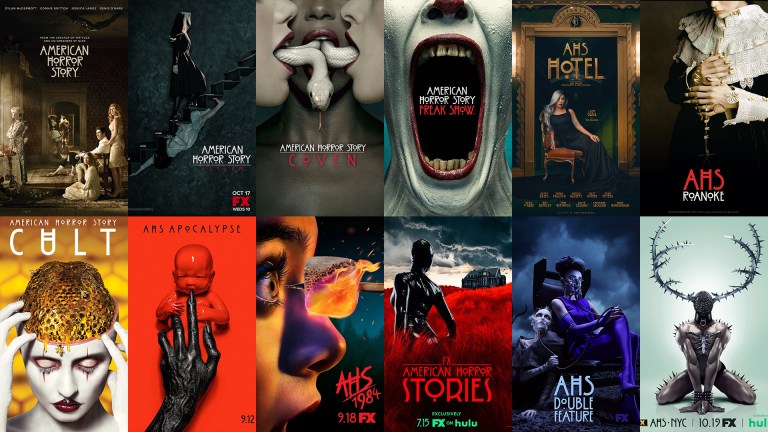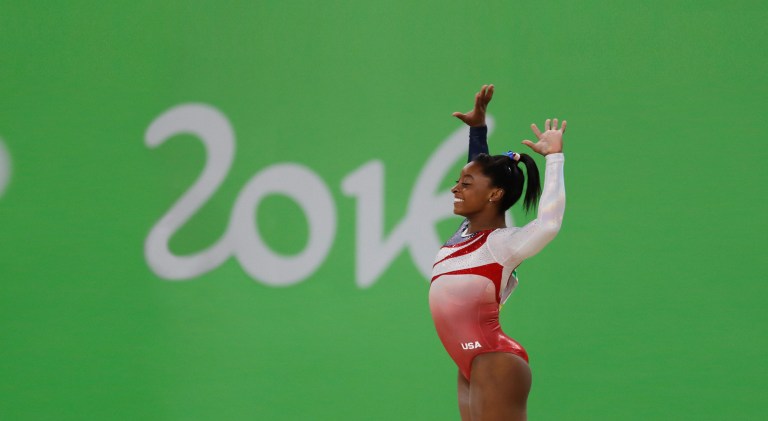The Trouble With Depicting Trans People
Trans characters are thrown in, marked, pointed out for a reason: so that their transness becomes something to talk about. And by now, I have to say that I've had quite enough of the rest of the world talking about us.
By Zinnia Jones

[youtube=http://www.youtube.com/watch?v=Tmm9R4FBSYQ&w=584&h=390]
Transgender women are most commonly represented in two areas of media: comedies and documentaries. We’re nearly omnipresent in mainstream humor — practically any half-hour of Comedy Central is guaranteed to contain at least one joke about us, and almost all sitcoms and late night talk shows will eventually get around to making some sort of “tranny” references.
In some instances, we’re shown to be hairy, hulking men in ill-fitting dresses, the very image inviting mockery. At other times, the “humor” comes from a cis man (quick lesson: “cis” means all you folks who aren’t trans) initially recognizing a woman as a woman, and reacting poorly to the discovery that she’s “really a man” — the notion that someone could take her gender history in stride is just unthinkable. Viewers apparently see no need to reconcile the vastly different assumptions underlying the immediately apparent man-in-a-dress and the indiscernible just-another-woman. We can be both repulsively masculine and yet feminine enough to satisfy the well-trained eyes of male heterosexuals, both deluded caricatures of womanhood and also stunning enough to seduce men who would never see us coming.
A supposed remedy to these insulting stereotypes is provided in the form of documentaries about us, almost universally focusing on the process of physically transitioning — as cis people see it. Shots of women doing their makeup, putting on dresses, being wheeled into an operating room and having their bodies cut open are so cliche that they’ve become the subject of their own drinking game. These documentaries are presented as a factual corrective to the overt derision of comedy, offering cis audiences the apparent moral salve of compassion and understanding for trans people. Yet just as in the case of comedy, this is again filtered through cis people’s perceptions of us – cis writers, cis reporters, cis producers. It’s merely the other, more insidious side of the same coin.
If the most effective lies are those mixed with some truths, there is no better demonstration of this than trans documentaries. The shows are just correct enough to avoid mangling certain basic facts about transitioning, while selecting and arranging these facts in a way that completely misrepresents what our lives are really like. These depictions purportedly exist to help cis people grasp who we are, beyond the comedic stereotypes and societal mis-perceptions. What they really do is reveal, in their subtle yet pervasive inaccuracy, just how poorly cis people understand the experience of being transgender. When you’re trans, it’s utterly fascinating to see how outsiders choose to describe you – and absolutely horrifying to realize that’s really how they see you.
An unrelenting focus on the body is a unifying theme of the stories that others tell about us. Such a focus conveys to viewers that visible, physical transition is the central feature of our lives. Left unaddressed are the much more extraordinary, personal, and crucial processes of self-recognition and self-acceptance that we work through before we even arrive at that stage. While the camera zooms in on the blossoming of our breasts, it misses the revolutionary blossoming of confidence that comes with admitting who we are to ourselves, taking the step of living openly as our gender, or choosing to seek hormone therapy. Such documentaries would rather film me shopping for bras than let me explain how in a matter of weeks, estrogen obliterated the anxiety and depression and emotional deadness that I never realized had been holding me back for my entire life.
They’ll speak in solemn tones about how HRT is “irreversible”, as if the effects of our own natural sex hormones weren’t already irreversible in the worst way. To them, the notion of permanently changing a “normal” body with cross-sex hormones has undertones of horror at the need to make such an incomprehensible decision. To me, the real reason it’s irreversible is that I immediately knew I would never consciously choose to give up the calmness and inner peace it gave me, because I had never before felt like a truly normal human being.
These documentaries make sure to capture the moment when a woman has “the ultimate surgery to become fully female”, but nowhere will they mention that only one in five trans women have actually had “the surgery.” Many of us certainly don’t feel that keeping our cocks should consign us to some gender limbo of existing as merely “partial” women, but in the common understanding of “complete” womanhood for trans people, there’s no room for the happy (or, at least, tolerant) ownership of a penis.
[youtube=http://www.youtube.com/watch?v=6n_eJjY8H9s&w=584&h=390]
And when they do attempt to delve into the inner lives of trans people, they still limit themselves to the most visible manifestations of our genders. Because cis people communicate the nuances of gender in only the most ham-handed and oblivious ways possible, they pick out the women with personal stories of playing with dolls and wearing pink frilly dresses – the ones who “always knew” since they were toddlers. One surely doesn’t need to be trans to poke holes in the notion that the presence or absence of interest in highly gendered “girl’s toys” defines the presence or absence of womanhood, but that’s the picture that emerges when producers literally can’t find anything more meaningful to fit the bill than pretty dresses. It’s a notion that leaves little allowance for women who would rather just put on a baggy shirt and sweatpants and no makeup before going to the corner shop. Trans women, that is — after all, such a thing is never thought to call the womanhood of cis women into question.
It’s easy to write these off as minor details that would be difficult to explain to a general audience, and which aren’t necessary to cover the broad strokes of what it means to be trans. And it can easily be argued that they not only increase the acceptance of trans people in cis society, but also help confused or questioning people realize that transitioning is a real and legitimate option.
What’s not so easy is personally reassuring hundreds of trans women who face agonizing self-doubt because they never played with dolls as little girls, or didn’t know when they were 3, or still don’t feel “trapped in the wrong body.” Because of those broad strokes, they now question whether they’re even trans at all – even in the face of overwhelming discomfort with their originally assigned gender. These inaccurate depictions set such a high bar that some women, despite thinking about it every day, will put off transitioning for years while allowing testosterone to ravage their bodies just because they aren’t sure that transition is a “need” for them rather than a “want.”
[youtube=http://www.youtube.com/watch?v=qBbgCOcQIso&w=584&h=390]
I was one of them, someone who had already been living as a woman in every way for over a year, yet still refused to seek treatment because I thought I was fine already. I didn’t think I felt uncomfortable enough with my body to justify doing anything about it. But of course, I wouldn’t know what that would feel like: I had no reference point for how my life could be even better, until I decided to find out for myself. Taught to fixate on my outer body, I had refused to listen to my inner voice.
Comedies present openly hateful and blatantly false stereotypes of who we are; documentaries present not-quite-right stories of our lives that trick both cis and trans people alike into thinking they know what being trans is all about. One poisons our image in the minds of cis people and makes us doubt whether the world will ever accept us, the other corrupts our self-understanding and makes us doubt whether we even are who we are.
So what do we do about this? When we point out the myriad shortcomings of most representations of trans people, we’re often asked what could improve this. What would constitute a truly positive representation of trans people in the media, when even the most apparently compassionate approaches are still almost irredeemably toxic?
I don’t believe such a thing is currently possible. When I go about my daily life, I don’t want to be the subject of lazy and hateful jokes, and I also don’t want my existence to serve as someone’s teachable moment. I want normalcy. We want to be able to live without being treated as either freaks to laugh at or zoo exhibits to learn about. We want to be human fucking beings. We want the normalcy of being left alone as others are — and this normalcy is precisely what society won’t allow us to have right now.
Some have paralleled the state of trans depictions to the progress of gay people in the media, just lagging behind by several decades. But gay couples increasingly have little issue with being openly and visibly gay, whereas trans people would often rather not have this fact of our lives be obvious to every single person we encounter in public. Most people know someone who’s gay, whereas 99.7% of the population is cis — and those of us who aren’t, again, usually don’t intend to make it easy for the rest of you to tell.
The result is that gay couples can now be casually included alongside straight people in the media without much attention or explanation at all, whereas any trans people must have their presence clarified explicitly. Not being inherently visible, they must be made visible — something has to mark us as trans. And while our society has nearly reached the point that acceptance of gays as normal is a baseline standard, the inclusion of trans people currently cannot be read as anything other than an intentional political statement.
Trans characters are thrown in, marked, pointed out for a reason: so that their transness becomes something to talk about. And by now, I have to say that I’ve had quite enough of the rest of the world talking about us. It’s awkward. It’s cringeworthy. It’s something for everyone else either to gawk at, or facilitate their belief that they now understand us. There is no realistic hope of a representation that’s truly positive in its own right — merely one that’s as absent of negatives as possible.
[youtube=http://www.youtube.com/watch?v=BpiKX1o4rjg&w=584&h=390]
The one show that’s been continually singled out as an example of “positive” trans representation is Elementary on CBS. In one episode, the character of Ms. Hudson is introduced, with Sherlock Holmes making a passing mention of her Adam’s apple. And nothing about it is ever mentioned again. But after all this time, it’s hard for us to believe that it’ll be left at that. It’s been brought up, and we’re all holding our breath, waiting for the other shoe to drop. ![]()




